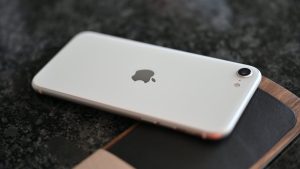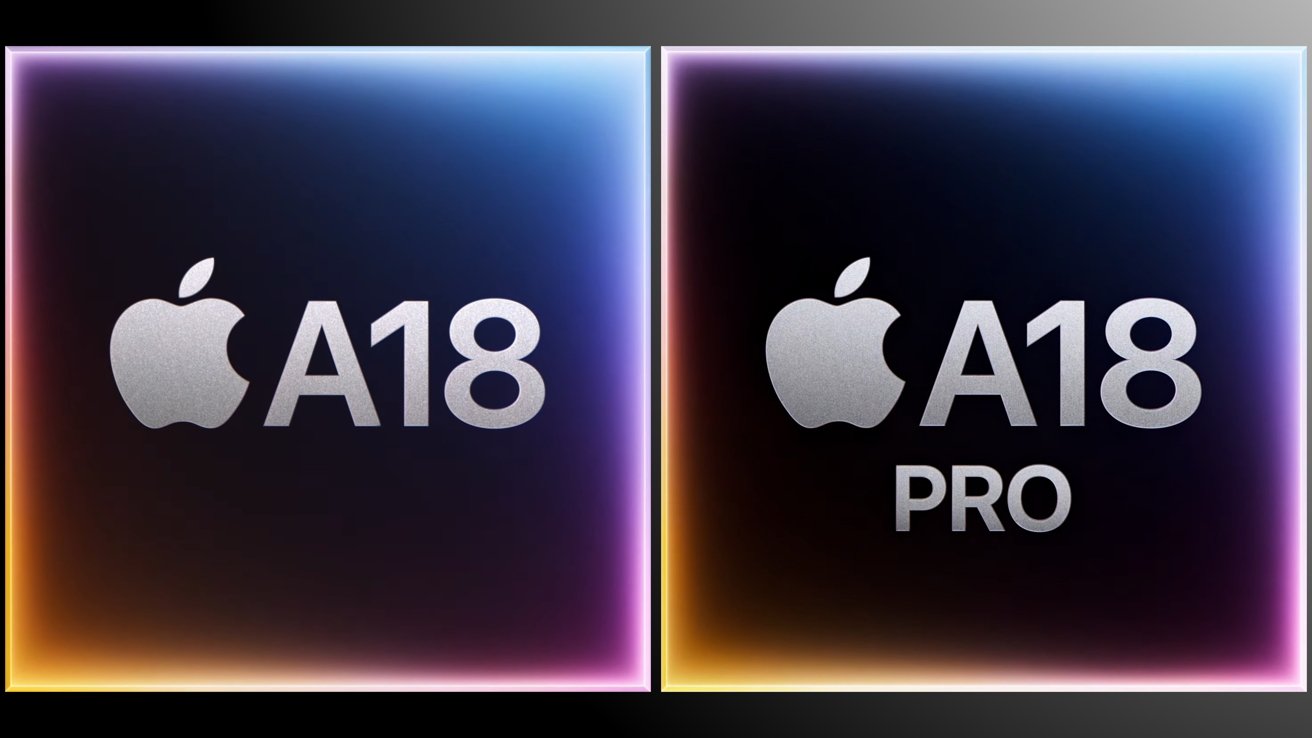
With the iPhone 16 range, Apple introduced two new chips — the A18 and A18 Pro. Here’s what’s different between them, and how they compare to older hardware.
On Monday, Apple announced the iPhone 16 and iPhone 16 Pro, both of which feature new processing hardware. For previous iPhone releases, such as the iPhone 14 and iPhone 15 range, Apple used a year-old chip in its base model iPhones. The standard iPhone 15, for instance, featured Apple’s A16 Bionic chip, while the iPhone 15 Pro used the newer and more powerful A17 Pro.
To better understand Apple’s latest chip upgrades, it’s important to bear in mind the core components of an Apple system-on-chip. The company’s chips consist of multiple processing units — the GPU handles graphics-related tasks, the Neural Engine or NPU is used for AI and machine learning, and the CPU is used for general data processing.
Each processing unit consists of multiple processing cores which run at different speeds. In general, a larger number of processing cores means that a chip is able to process certain tasks more quickly, leading to a better user experience. Factors such as the chip’s clock speed, power consumption, node process, and available RAM also influence performance, though.
Relative to earlier iPhone models and their processing hardware, the newly announced A18 and A18 Pro have multiple advantages, both in performance as well as speed and power efficiency.
A18 specs vs previous chips
For the iPhone 16 line, Apple unveiled a new line of chips with shared features. Apple’s A18 and A18 Pro are both based on TSMC’s second-generation node process, known as N3E. In addition to the common architecture, the chips share the same identifier — t8140. They also have the same number of CPU cores and NPU cores.
The second-generation TSMC 3nm production process means that the chips have a larger number of transistors and that they can achieve greater power efficiency compared to earlier chips like the A16 Bionic, which uses a 4nm node process. The N3E process is also used for Apple’s M4 chip, found in the iPad Pro models announced in May of 2024.
The iPhone 16, as well as the larger iPhone 16 Plus, both use the standard A18 chip. According to Apple, the A18 chip features significant performance and power-related improvements compared to the system-on-chip used in the iPhone 15, the A16 Bionic.
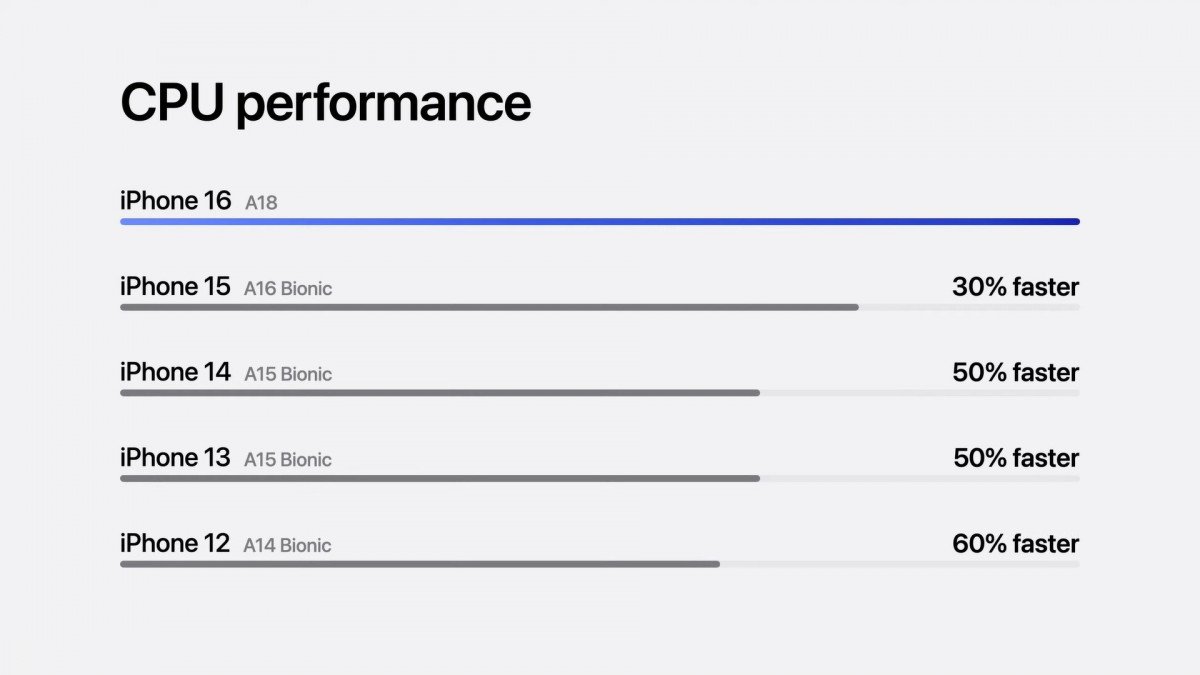
A18 vs A18 Pro: Apple’s new A18 chip is 30% faster than the A16 Bionic used in the iPhone 15
The A18 features the following processing specifications, as per Apple’s website:
- 6-Core CPU with 2 performance and 4 efficiency cores
- 5-Core GPU
- 16-Core Neural engine
Relative to the A16 Bionic chip, found in the base model iPhone 15, the A18 features the same number of CPU cores, while it has an additional graphics processing core.
Apple claims that the CPU in the iPhone 16 is 30% faster than the iPhone 15, and that it draws 35% less power. The A18 CPU is also 50% faster than the one used in the iPhone 14 and iPhone 13.
On Tuesday, alleged processing scores for the A18 chip were uploaded to Geekbench. The test results supposedly come from an iPhone 16, and they show a 10% increase in single-core performance relative to the A17 Pro. Multi-core performance was similar to that of the A16 Bionic — 8% slower than the A17 Pro. While this score does not come from Apple and may not be accurate, it still serves as a potential indicator of the A18’s performance.
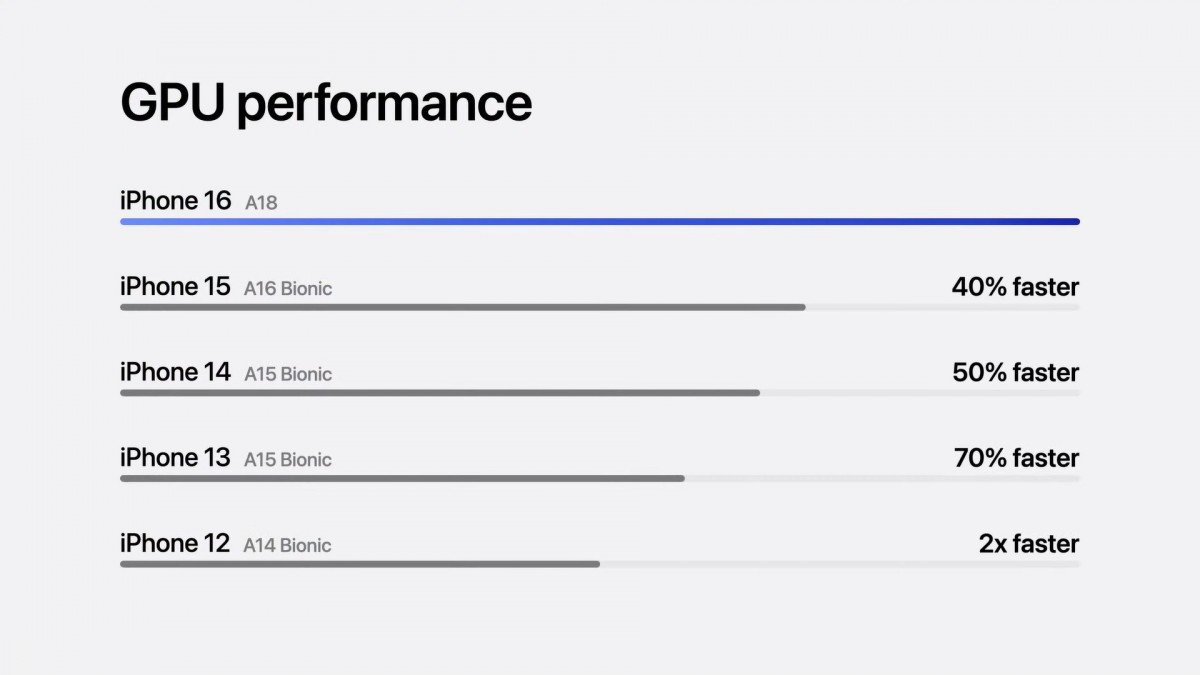
A18 vs A18 Pro: The GPU of Apple’s A18 chip is 40% faster than the one in the A16 Bionic system-on-chip.
In terms of graphics processing performance, Apple claims that the GPU in the iPhone 16 is 40% faster than the one used in the iPhone 15, and that it uses 35% less power. The five-core GPU of the A18 also supports hardware-accelerated ray tracing, a feature not available on the A16 Bionic. Ray tracing is an advanced lighting effect primarily used in modern, graphics-intensive games.
The 16-Core Neural Engine of the A18 presents a significant improvement over the one found in the A16 Bionic. According to Apple, the Neural Engine within the A18 is two times faster than the one found in the A16 Bionic. It can also perform up to 35 trillion operations per second.
The A18 also features an improved memory subsystem, with 17% faster LPDDR5 memory and more RAM than the A16 Bionic. The improved Neural Engine, together with 8GB of RAM, makes Apple Intelligence features possible on the iPhone 16 and iPhone 16 Plus. Previously, Apple Intelligence was exclusive to the iPhone 15 Pro and iPhone 15 Pro Max.
While Apple’s A18 packs a serious punch when compared to the A16 Bionic of the iPhone 15, it’s obviously outperformed by the high-end A18 Pro. The A18 Pro features an additional GPU core and hardware-specific enhancements.
A18 Pro specs vs previous chips
The iPhone 16 Pro and iPhone 16 Pro Max make use of Apple’s A18 Pro system-on-chip. According to Apple, the SoC has serious performance enhancements relative to the ones used in earlier iPhone models.
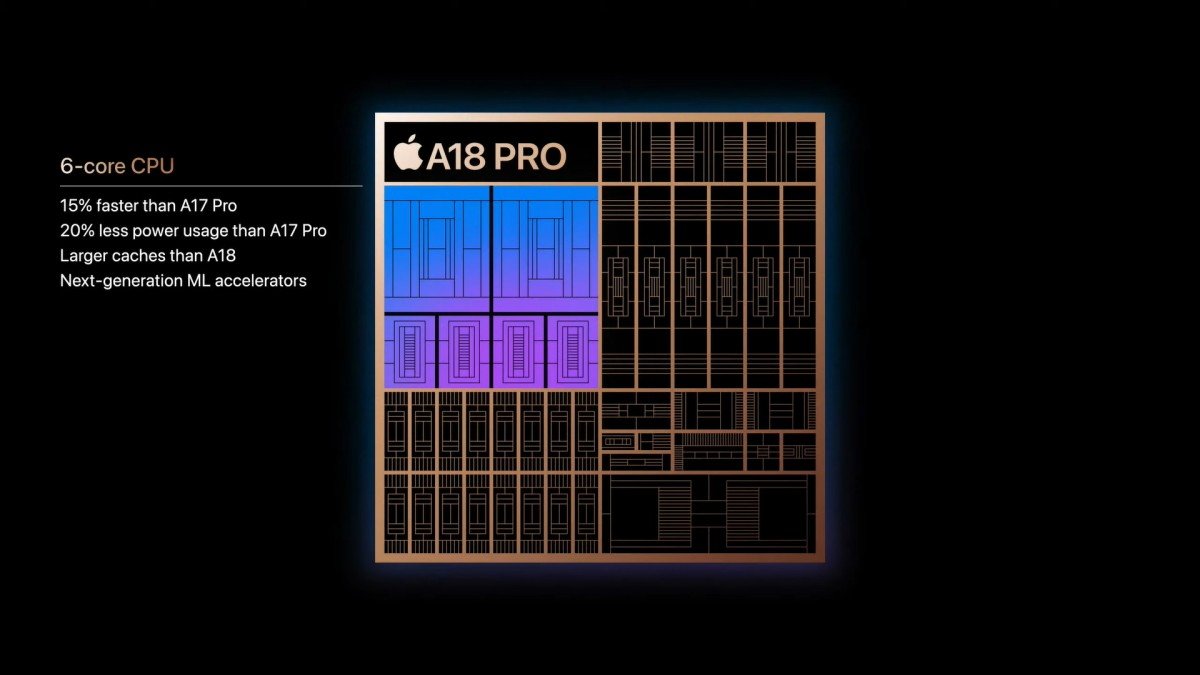
A18 vs A18 Pro: The A18 Pro system-on-chip is 15% faster than the A17 Pro, according to Apple.
The A18 Pro features the following processing specifications, as per Apple’s website:
- 6-Core CPU with 2 performance and 4 efficiency cores
- 6-Core GPU
- 16-Core Neural engine
The CPU of the A18 Pro is 15% faster than the one found in the A17 Pro used by the iPhone 15 Pro and iPhone 15 Pro Max. The A18 Pro’s CPU also uses 20% less power compared to its predecessor.
On Wednesday, processing score results supposedly originating from an iPhone 16 Pro Max were uploaded to Geekbench. The A18 Pro received a single-core performance score of 3409, and a multi-core performance score of 8492. While the accuracy of these alleged tests is unverifiable, the test results align with Apple’s claims, indicating that the A18 Pro is 15% faster than the A17 Pro and that it could be 30% faster than the A16 Bionic chip.
Relative to the standard A18, the CPU performance of the A18 Pro is similar. Comparing Tuesday’s claimed A18 Geekbench test results to Wednesday’s alleged A18 Pro test results, the A18 Pro received a 9.5% higher single-core performance score and a 27.4% higher multi-core performance score. It’s worth emphasizing that neither of these scores comes from Apple, and are thus not verifiable.
In addition to this, the A18 Pro features larger caches than its standard A18 counterpart, as well as next-generation machine learning accelerators and improved memory bandwidth, allowing for better performance in demanding tasks and games.
The A18 Pro also contains an Advanced Media component, which enables Pro-exclusive features. This includes the ProMotion display with a variable refresh rate, Always-on display functionality, USB 3 speeds, and ProRes video recording. None of these features are available on the standard iPhone 16.
A new image signal processor enables better data processing for video encoding, which the A18 Pro can do twice as fast as the A17 Pro.
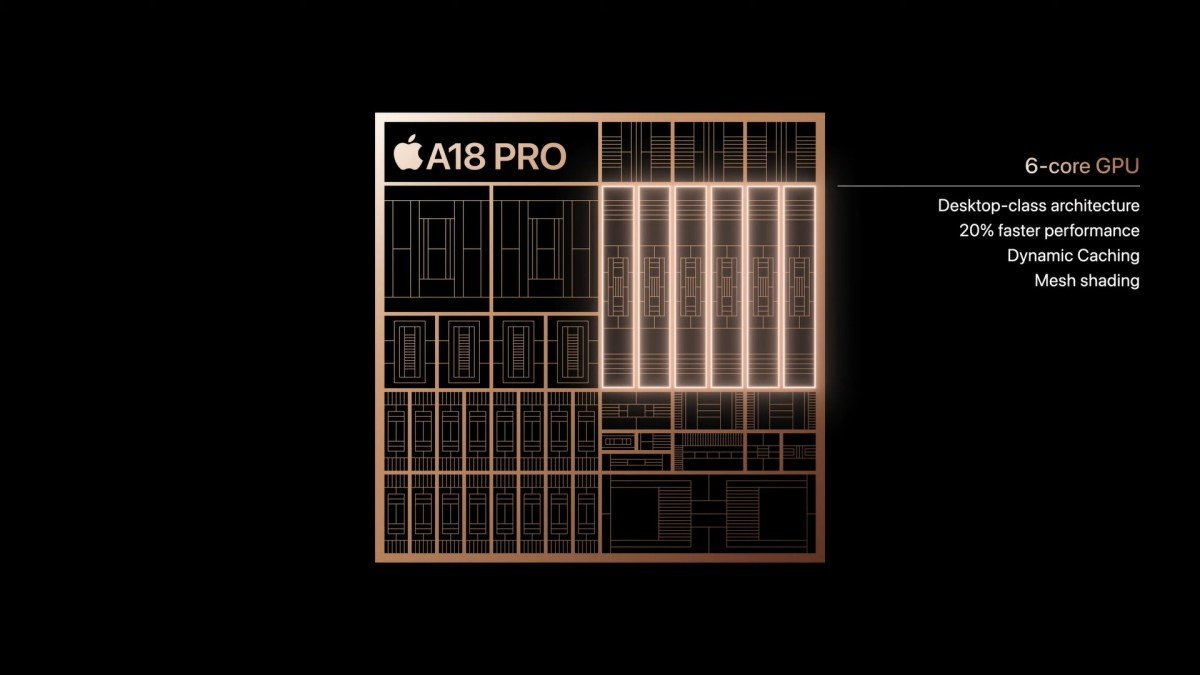
A18 vs A18 Pro: The A18 Pro features a 6-Core GPU with desktop-class architecture and mesh shading.
As for the GPU, Apple says that the A18 Pro’s graphics processing unit features desktop-class architecture. The company also says the A18 Pro’s GPU is 20% faster than the previous generation and capable of two times the ray tracing performance of the A17 Pro.
The 6-core GPU in the A18 Pro also features dynamic caching and is capable of mesh shading, which makes the A18 Pro a great choice for more recent, graphics-intense games. Relative to the A18, the GPU of the A18 Pro features an additional core, making it a 6-Core GPU rather than a 5-Core unit.
A18 vs A18 Pro — chip binning
Apple’s A18 and A18 Pro are similar in many ways — they share the same N3E node process, identifier, number of CPU and NPU cores. Still, the A18 Pro can achieve greater performance. Because of this, it seems likely that the A18 is what’s known as a binned version of the A18 Pro chip.
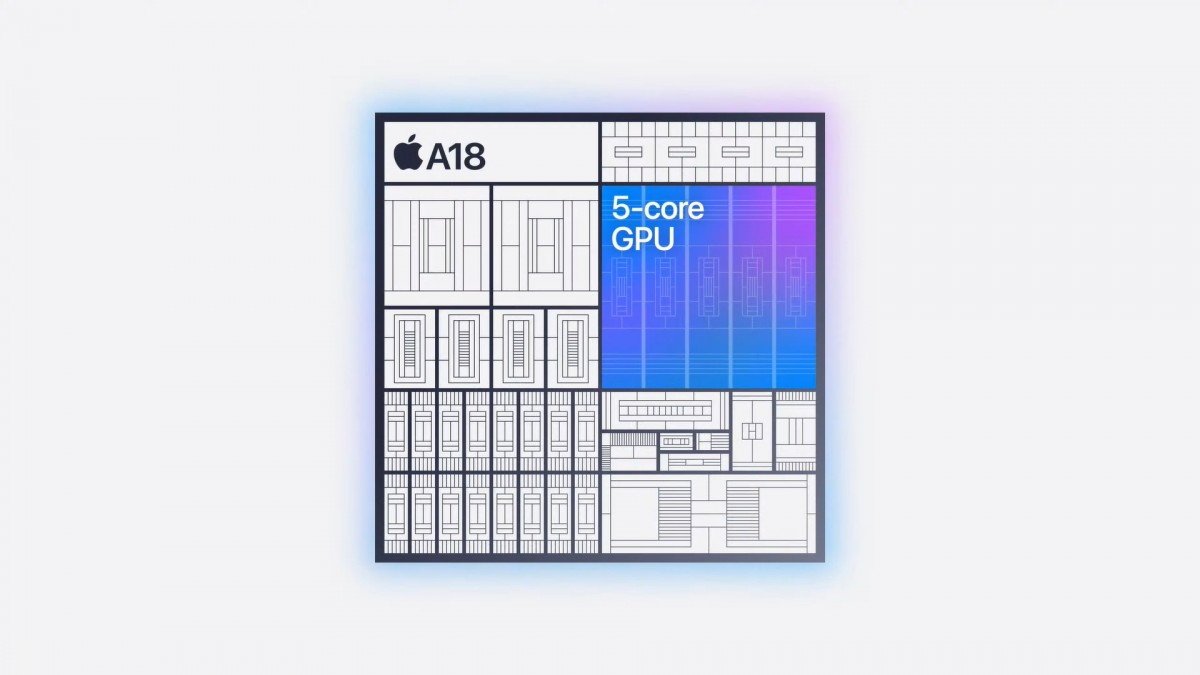
A18 vs A18 Pro: The A18 GPU features one core less than the GPU of the A18 Pro.
Chip binning is a selection process in system-on-chip manufacturing, where chips that don’t meet certain criteria, but are otherwise usable, are sorted and eventually used as lower-spec versions.
In the production of nanometer-level chips, mistakes can and often do happen, so a usable chip with a non-functional processing core could still be sold as a less powerful version.
When compared to the A18 Pro, the A18 features only one GPU core less, making chip binning a possible explanation. It would also explain why the chips have a shared internal identifier, despite using different marketing names. The A18 and A18 Pro feature the same number of CPU cores and Neural Engine cores.
This means that the CPU and Neural Engine are arguably similar on both A18 and A18 Pro. The main advantage of the A18 Pro lies in its additional GPU core and its performance relative to the less powerful A18 GPU.
A18 vs A18 Pro — real-world impacts
In general, there are few differences between the A18 and A18 Pro. Both chips support Apple Intelligence and hardware-based ray tracing, and offer similar improvements when compared to their respective predecessors.
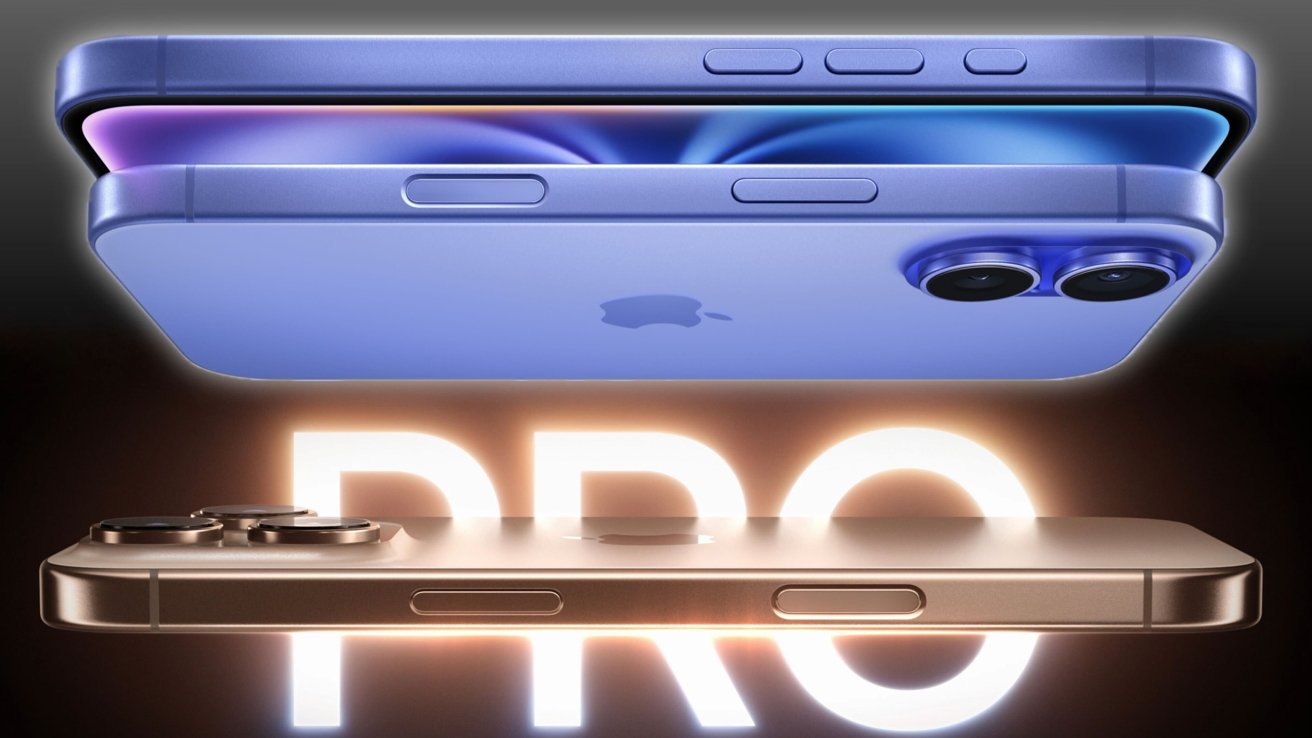
A18 vs A18 Pro: The iPhone 16 and iPhone 16 Pro feature similar chips, with slight performance differences.
That being said, however, the A18 Pro chip in the iPhone 16 Pro still has an extra GPU core. This could give it a slight edge over the standard iPhone 16 in graphics-intensive tasks or games, but it’s unlikely the average user will notice the difference.
Relative to the base model iPhone 15, with its A16 Bionic chip, the A18 has its advantages in the form of Apple Intelligence support, as well as ray tracing for graphics-intensive games.
The iPhone 15 does not support either of these features because the A16 Bionic lacks the required hardware. With the ever-increasing popularity of artificial intelligence tools, the A18 and A18 Pro could be a compelling upgrade for some users. The same cannot be said for the iPhone 16 Pro, though, since its system-on-chip mainly offers performance improvements relative to the A17 Pro, and does not introduce significant new features.
It’s important to remember that the system-on-chip is only part of the upgrade, though. To get the full picture of what a new iPhone generation brings to the table, it’s important to consider other hardware-related upgrades and design changes, and not just raw performance.
Apple’s A18 line of chips complements features such as the new capacitive Camera Control button, increased display sizes on the Pro models, and a new vertical camera alignment on the base model iPhone 16 and iPhone 16 Plus. At the end of the day, each user has different priorities when it comes to a new iPhone, which is why Apple offers different models.




